from 1 review
13 Days
Daily Tour
12 people
___
In New Delhi, visit Raj Ghat, memorial to the Father of the Nation, Mahatma Gandhi. It is a simple black marble platform that marks the spot of his cremation on 31 January 1948.
We will stop for lunch at Good local Restaurant. Afterwards visit Humayun Tomb, This tomb, built in 1570, is of particular cultural significance as it was the first garden-tomb on the Indian subcontinent. It inspired several major architectural innovations, culminating in the construction of the Taj Mahal.
Further we drive past India Gate, memorial built in the year 1931 to commemorate the Indian soldiers who died in the World War I & the Afghan Wars. The names of the soldiers who died in these wars are inscribed on the walls. President’s House, the official residence of the President of India, built in the year 1931. Until 1950 it was known as Viceroy’s House & served as the residence of the Governor-General of British India.
Culminate the day at Qutub Minar, built in the year 1206 by Qutub-ud-din Aibek. It is the tallest (72m) brick minaret in the world, an important example of Indo-Islamic Architecture.
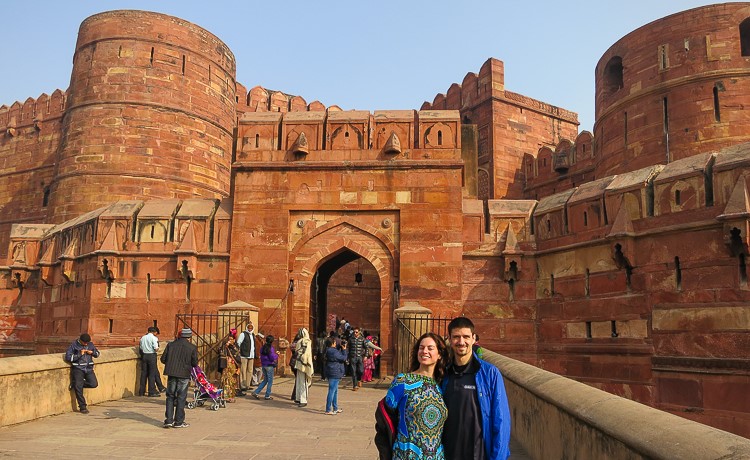
You are meet & greet with our company representative and he will escort you to the hotel and will help you with the check -In formalities.
Day at your own leisure. Overnight stay at hotel. (No Meals)
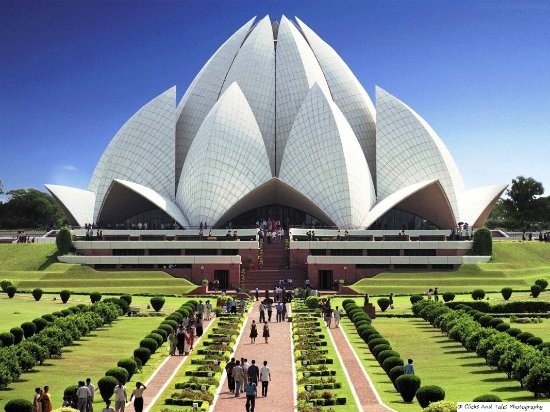
After a relaxing breakfast, the tour guide will pick you up from the hotel and take you for a guided sightseeing of Old and New Delhi.
Full day a guided tour of Old Delhi, the 17th century walled city of Shah Jahanabad, visiting the great Jama Masjid, the principal mosque of Old Delhi. Built in the year 1656 AD by the Mughal Emperor Shah Jahan, it is the largest & best known mosque in India. Later take a rickshaw ride through Chandni Chowk, the old marketplace of Shah Jahanabad now a picturesque bazaar.
In New Delhi, visit Raj Ghat, memorial to the Father of the Nation, Mahatma Gandhi. It is a simple black marble platform that marks the spot of his cremation on 31 January 1948.
We will stop for lunch at Good local Restaurant. Afterwards visit Humayun Tomb, This tomb, built in 1570, is of particular cultural significance as it was the first garden-tomb on the Indian subcontinent. It inspired several major architectural innovations, culminating in the construction of the Taj Mahal.
Further we drive past India Gate, memorial built in the year 1931 to commemorate the Indian soldiers who died in the World War I & the Afghan Wars. The names of the soldiers who died in these wars are inscribed on the walls. President's House, the official residence of the President of India, built in the year 1931. Until 1950 it was known as Viceroy's House & served as the residence of the Governor-General of British India.
Culminate the day at Qutub Minar, built in the year 1206 by Qutub-ud-din Aibek. It is the tallest (72m) brick minaret in the world, an important example of Indo-Islamic Architecture.
Overnight stay at hotel.
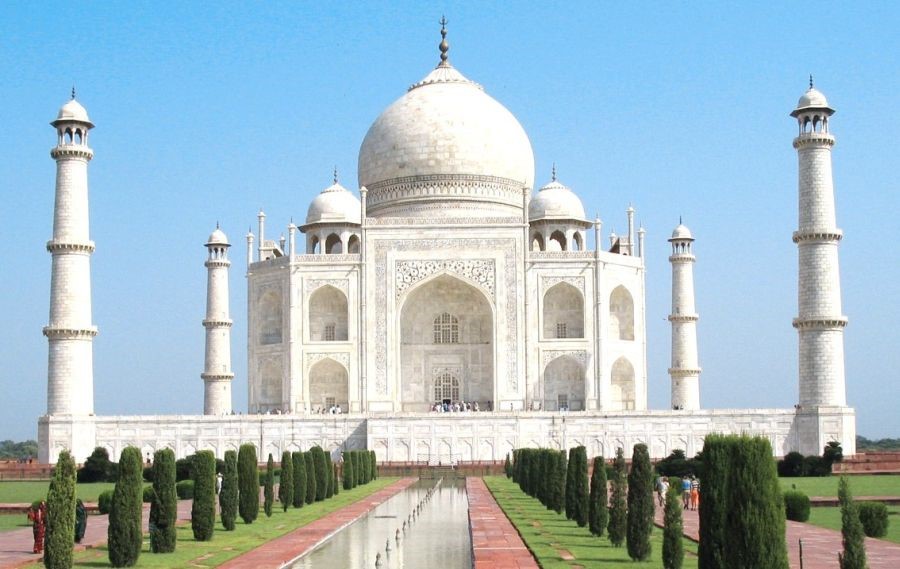
After early breakfast drive to Agra. Afternoon visit the incredible architectural excellence of Taj Mahal (Friday closed), built by Emperor Shah Jahan in memory of his beloved wife Mumtaz Mahal. Next we visit Agra Fort, built principally as a military establishment by Akbar in 1565.
The red sandstone Agra Fort was partially converted into a palace during Shah Jahan's time. This massive Fort is 2.5 km long & is considered as predecessor of Delhi Red Fort. Later in the evening visit Itmad-ud-Daulah Tomb, built by Noor Jahan, wife of Mughal Emperor Jahangir, in memory of her father Mirza Ghiyas Beg. Before Taj Mahal was built, its rough design was already standing in the form of ItmadudDaulah's Tomb.
Overnight stay at hotel.
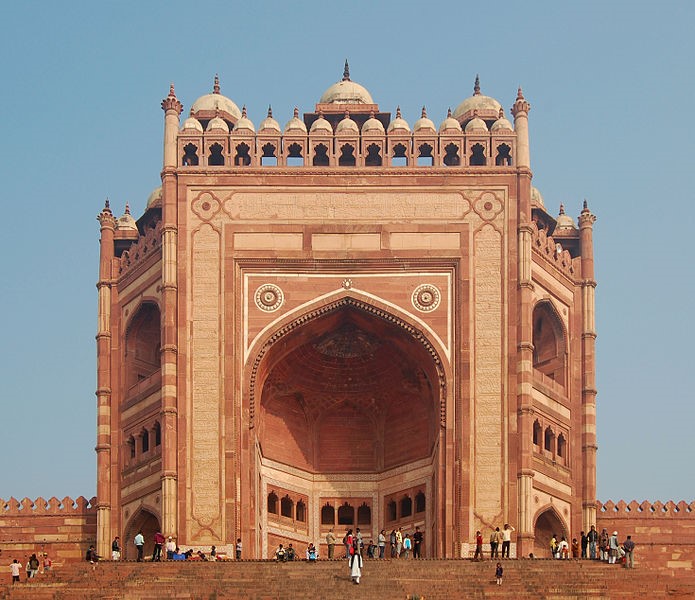
After breakfast drive to Jaipur enroute visit Fatephur Sikri, built in 1571, one of the world's most perfect ghost cities and a marvel of design and construction. It is a synthesis of the flourishing styles of the Persian courts and the prevailing Hindu-Islamic trends. Fatehpur (town of victory) Sikri was built by Akbar, the third and greatest of the Great Moguls. It is over 400 years old and today its pristine red sandstone buildings are as perfect as when they were first chiseled.
The town was erected after a holy man, Sheikh Salim Chisti, decreed the births of three sons to Akbar after all his children had died in infancy. There are three sections to the City: The Royal Palace (notable for the Emperor's throne), the outside of the Royal Palace and the Jami Masjid (the location of the Tomb of Sheikh Salim Chishti, a masterpiece in brilliant white marble). The centerpiece of this remarkable monument is the Jewel House of the Diwan I Khas. Architecturally extraordinary, the four doorways lead into a single-story room where a huge central pillar supports a seat reached by mid-air walkways.
Upon arrival at Jaipur you are check-In to your pre-booked hotel.
Evening you can explore he Local Bazaars.
Overnight stay at hotel.
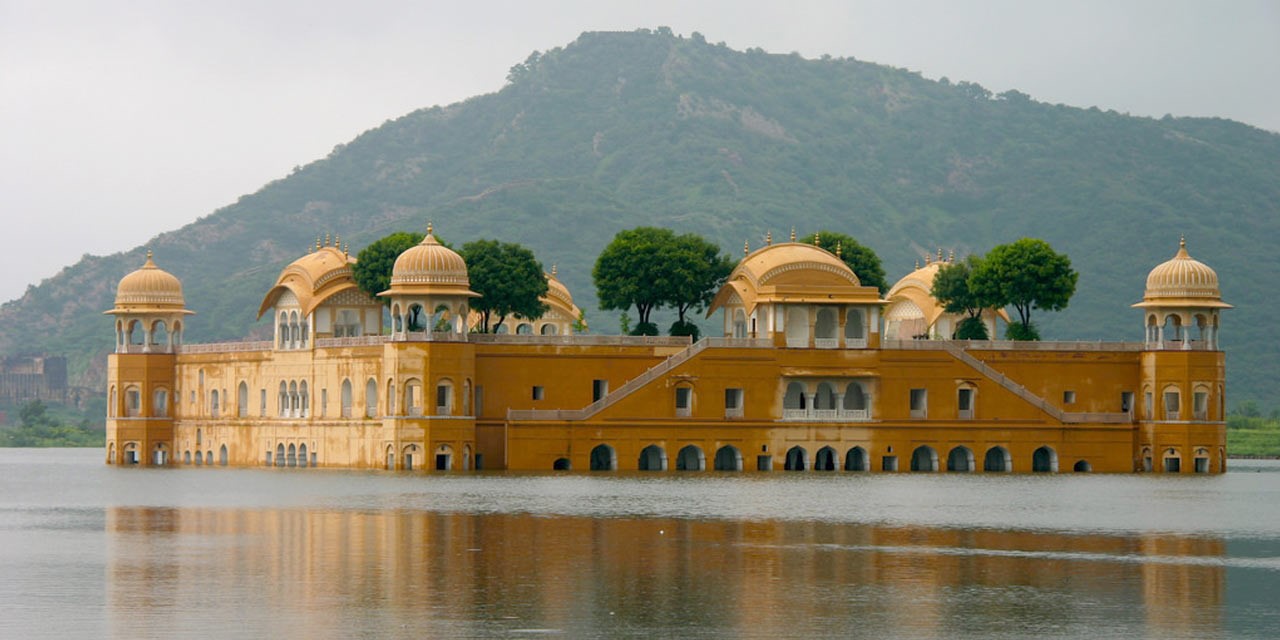
Morning drive to Amber, the name of the ancient kingdom of Jaipur and also the name of its ancient capital, situated 7 miles away. Its history can be traced backed to the 12th century. Amber Fort is superbly located, protected by the wild Arrival Hills on all sides. Originally built in the 11th century, it was expanded by Raja Man Singh in the late 16th century. The ascent to the Fort will be on elephant backs.
Afternoon: city tour including the City Palace, Hawa Mahal (Palace of Winds), Jantar Mantar Observatory, bazaars.
Known as the “Pink City,” Jaipur was founded by Sawai Jai Singh II (1700-1743). It has 7 gates into the city--one for each of the 7 planets (which was the number of planets known at the time of the city’s founding). At the heart of Jaipur is its City Palace which houses an extensive collection of rare manuscripts, Mughal and Rajasthani miniatures, Mughal carpets, costumes and textiles, arms and weapons, royal buggies, chariots and palanquins and a remarkable carriage -the indiraviman - that was drawn by four elephants.
At the center is Chandra Mahal, the seven-tiered moon palace where the present Maharaja still resides. The City Palace complex also contains the Govind Devji Temple, dedicated to Lord Krishna. Just outside the gateway of the City Palace is Jantar Mantar, the Yantralaya of Sawai Jai Singh II, the last great classical astronomer in India. The modernistic structures known as Yantras are the unique creations of this astronomer-king, designed by him and built by experts to observe the movements of the sun, moon, planets and stars. This is the largest of five observatories founded by the astronomer-king in various parts of the country. Hawa Mahal (Palace of Winds) is Jaipur's most-photographed building, a honeycomb palace with 953 latticed windows overlooking the bazaar and busy streets of Jaipur. Built in 1799 by the poet-king Pratap Singh, this extraordinary building was used by purdah-bound women to watch the grand processions that were a regular feature of the city.
Dinner at Surabhi Restaurant & Turban Museum.
Overnight stay at hotel.
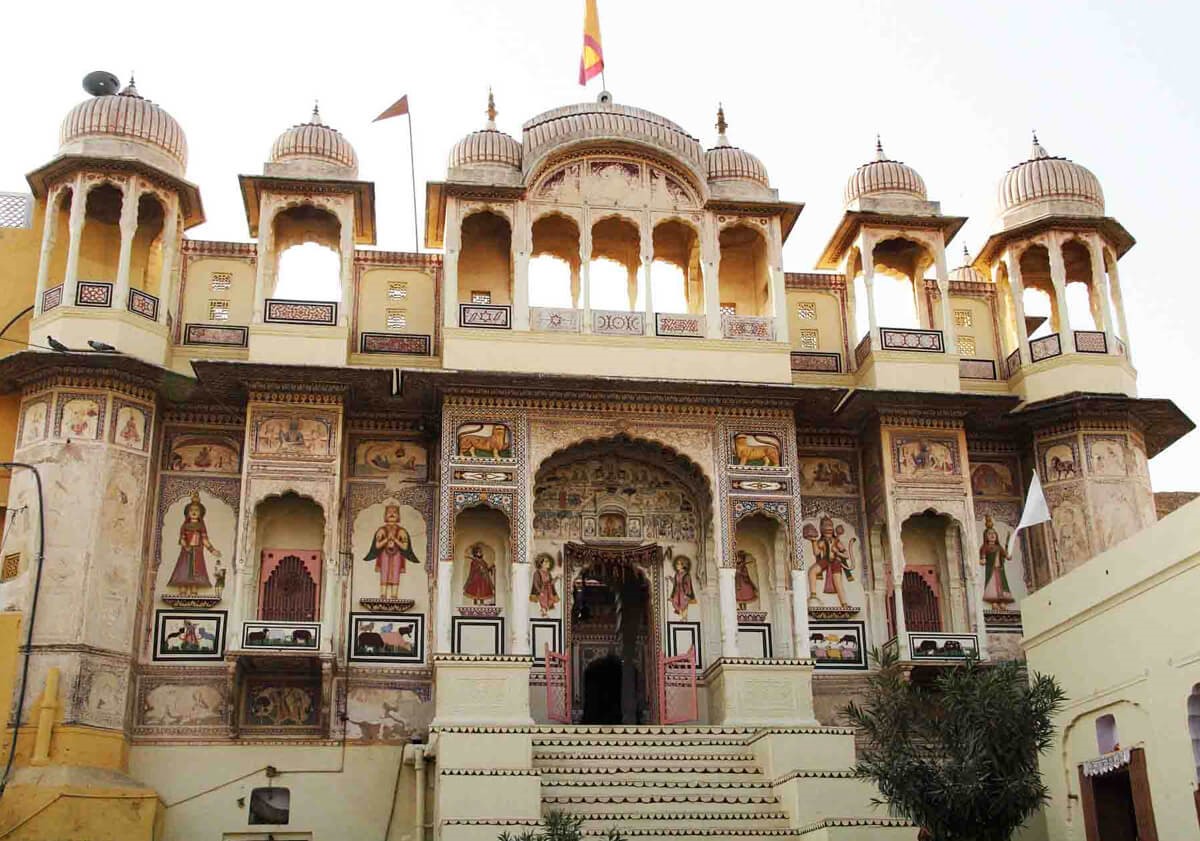
After breakfast we drive to Mandawa, upon arrival Check In to your pre-booked hotel.
Afternoon half day sightseeing of Mandawa visiting forts and painted havelis.
Overnight stay at Hotel.
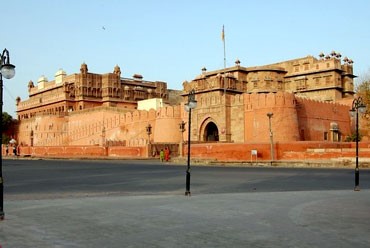
After breakfast we drive to Bikaner, Check In to your pre-booked hotel.
Bikaner was founded by Rao Bika, second son of the founder of Jodhpur. The city figured importantly on the great caravan trade routes. A long city wall encircles the old city while all important buildings, including the fort and the palaces are outside the city walls. The Ganga Canal, built between 1925 and 1927, brought prosperity to this otherwise arid desert region.
Upon arrival check in to your pre-booked.
Afternoon, you will proceed for half day guided city tour of Bikaner visiting Junagarh Fort & Museum, Ganga Golden Jubilee Museum, Camel Breeding Farm.
Overnight at hotel.
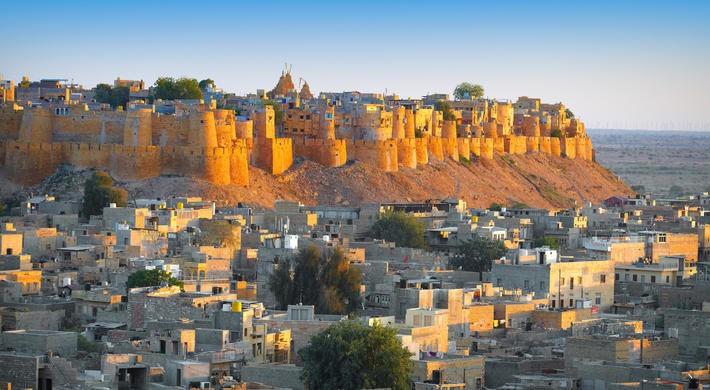
After breakfast, drive to Jaisalmer - A magnificent fort looming over the city, picture-postcard vistas of sand dunes and an array of illuminated sandstone buildings. Jaisalmer is nothing short of a scene straight out of Arabian Nights. It attracts many couples, honeymooners and families with its erstwhile royal splendor. The Jaisalmer Fort (also known as the Golden Fort of Rajasthan) is the most splendid attraction of the city, perched on an elevated patch looking over the city. Surrounded by numerous golden-hued shrines, Gadsisar Lake is ideal for an evening picnic or a short paddleboat ride. The city's most popular activity is taking a camel ride over the desert sands; best enjoyed at sunrise and sunset, the ride gives an insight into Rajasthan's rural life and stunning vistas of the horizon. Jaisalmer's winding alleys are home to vibrant markets from where you can pick up quintessential Rajasthani souvenirs. Rajasthani cuisine, famous for its spicy veg curries, mouth-watering meat dishes and delectable sweets is the icing on the cake.
Late afternoon we visit Khuri village, in the desert 40km (25 miles) southwest of Jaisalmer. It is a peaceful place with houses of mud and straw, decorated like the patterns on Persian carpets. Short Camel ride in the sand dunes just before sunset.
Overnight stay at hotel.
After breakfast, we visit Hilltop fort and the ancient Jain Temples. The fort is the most lively that you’ll visit anywhere in India, with homes and shops tucked in hidden lanes. Stalls are swaddled in colorful
Rajasthani embroidered and mirrored cloths. Built in 1156 by the Rajput ruler Jaisala, the fort crowns the 80 meter (262 feet) high Trikuta Hill. About a quarter of the Old City’s population resides within the fort walls. Within the fort walls are a beautiful set of Jain temples built between the 12th and 15th centuries. Guided walk about the city seeing several havelis. These impressive mansions, built by wealthy merchants, are fine sandstone buildings with elaborate wall murals and mirror work. They are still occupied by families, descendants of the original owners in most cases.
Afternoon independent to explore the winding narrow passages of the walled old city where shops are tucked into every nook and cranny and locals go about daily life.
Overnight stay at Hotel.
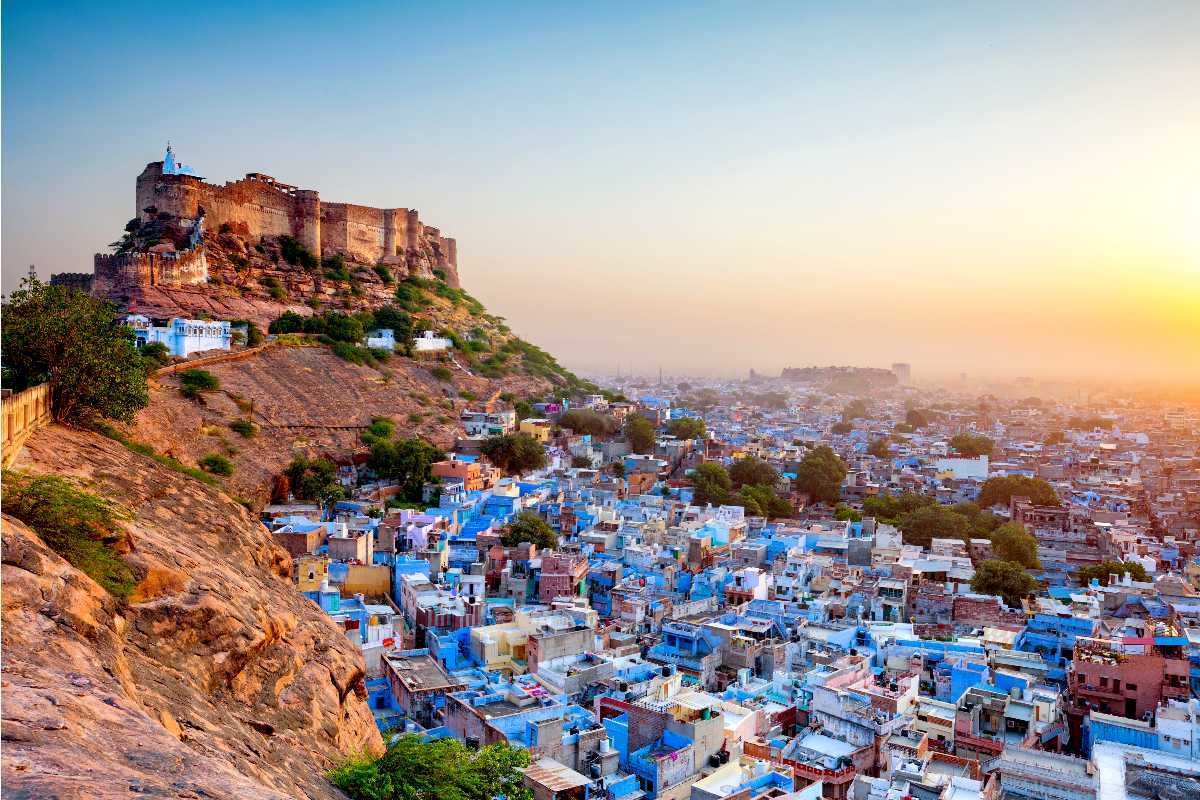
After breakfast, drive to Jodhpur. Upon arrival Check In to your pre-booked hotel. Late afternoon browse the bazaars of the old city. Jodhpur is well known for its glass bangles, puppets and other folk art. Ornate mirror-embedded and lacquer-finished glass bangles can be found here. The area around the bazaars is a wonderful example of 19th century town planning, blending Rajasthani concepts with more contemporary styles.
Overnight stay at hotel.
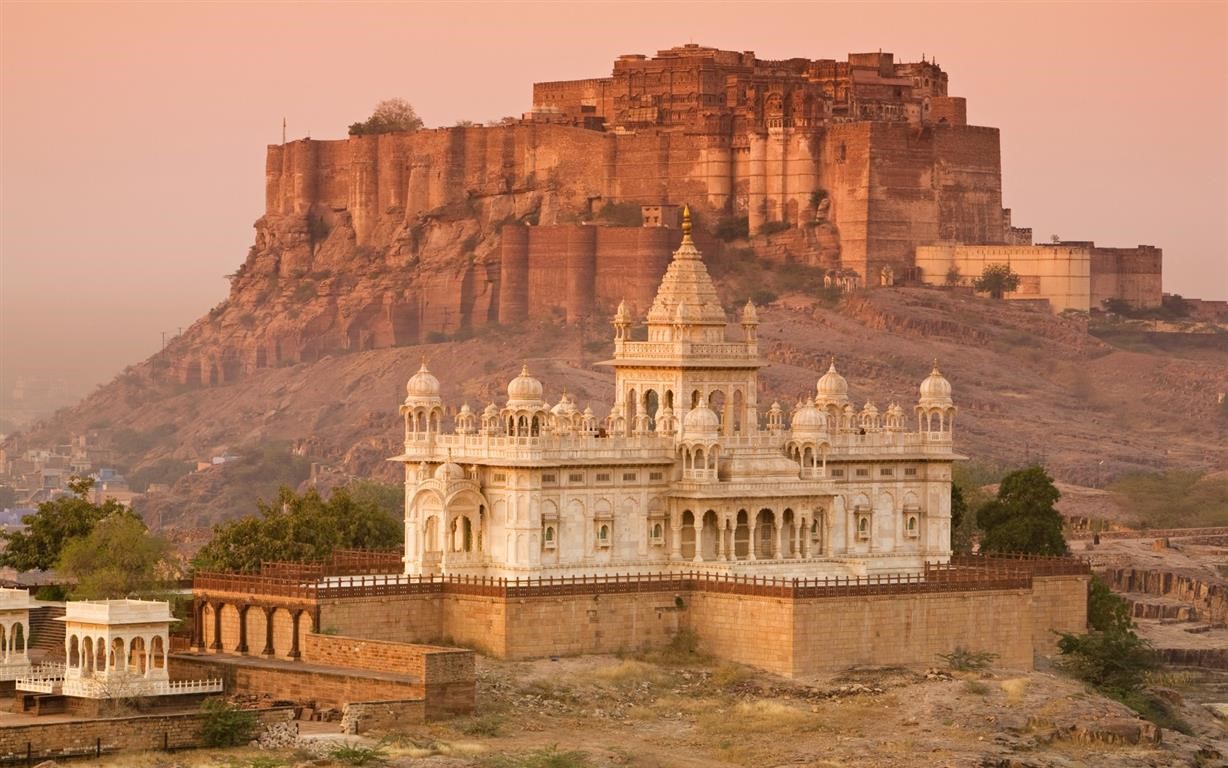
After an early breakfast, the guide will pick you up from the hotel for a guided half day sightseeing tour of Jodhpur. Tour includes the following places of interest:
Mehrangarh Fort: Rested on a hilltop, it takes five kilometers by a curvy road to reach Mehrangarh. Mehrangarh is considered by many as the most striking fort in Rajasthan. Initially built by Maharaja Rao Jodha, the fort was further succeeded by the rulers of Marwar. Of the seven huge gates to the fort a few like Jayapol and Fatehpol were constructed to celebrate the victories of the Marwar rulers over countless enemies. You enter through gates which bear the evocative handprints of the Sati queens, women of the royal harem who took their own lives when their men were defeated in battle. The fort has a series of spectacular palaces, each decorated with exquisite engravings, lattice and mirror work. Of particular note is the museum that exhibits a magnificent collection of royal memorabilia
Jaswant Thaada: The Jaswant Thada is an architectural marvel with intricate carvings. Famed as one of the most beautiful white marble cenotaphs, it was built in 1899 by Maharaja Sardar Singh in commemoration of his father Maharaja Jaswant Singh II. This white marble wonder of Rajasthan is often called the Taj Mahal of Marwar. The splendid edifice is a perfect example of Rajputana style of architecture. Its impeccable design and architecture is symbolic of the fine craftsmanship of the bygone era. The main memorial is built like a temple, with beautiful domes and finely carved sculptures. Visitors can see here beautiful portraits of the various rulers of Jodhpur. The complex also features a memorial of a peacock that flew into a funeral pyre. Magnificently carved gazebos, an exquisite multi-tiered garden and a small lake surround the cremation ground.
Afterwards we drive to Udaipur enroute we visit the magnificent Ranakpur Jain Temples.
Ranakpur Jain Temples built in 1439 and dedicated to Adinath, the first Jain Tirthankar. The three temples in the complex each are distinct in design, with carved ceilings and arches decorated with friezes depicting scenes from the lives of the Jain saints. The largest, Adinatha, is noted for its grandiose scale and elaborate ornamentation and for its 1444 sculptured pillars, all with different scenes from Jain mythology and cosmology. The temples are situated in the Haldighati Jungle where monkeys, wild boars and panthers are dwelling as well as exotic trees such as cinnamon apple and babur maple.
Lunch at good local Restaurant.
Udaipur, often called the Venice of India, this is a city of lakes, palaces and gardens. There is no place in India which appeals more to the imagination of poets and painters, travelers and writers, than Udaipur, the lovely lakeside capital of Mewar. The city's inherent romance and beauty, along with its remarkable past, bristling with episodes of heroism and splendor, continue to enthrall visitors. Udaipur, sometimes called the City of Dawn, looms up like a vision in white. Surrounded by hills and mountains, and set on the edge of three lakes which give way to a fertile plain, it is bewitching in all its details - narrow streets lined by vivid colored stalls, gardens, temples and palaces - every feature mirrored in the placid blue waters of Lake Pichhola.
Udaipur retains the essence of a quaint town with cobble stone streets, plentiful local bazaars, marble palaces, lakeside gardens, temples and havelis. It is a traditionally planned fortified city surrounded by walls and massive gates. The rulers, beginning with Maharana Singh in the mid 16th century, prided themselves on being independent from other more powerful regional neighbors, particularly the Mughals.
Sunset boat ride on Lake Pichola. Overnight stay at Hotel.
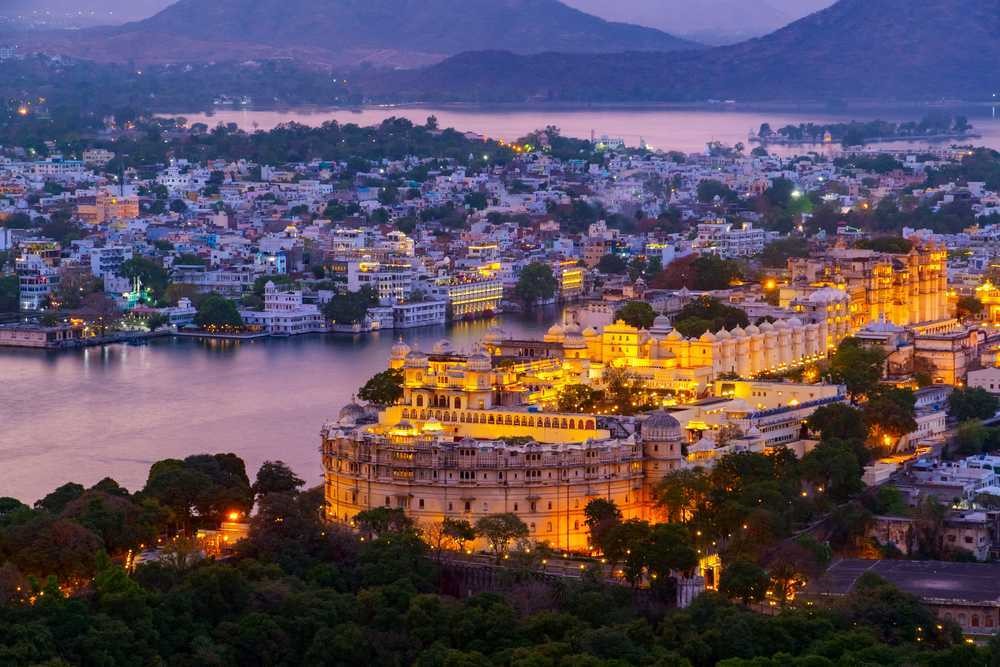
In the morning we will visit the City Palace, the largest Palace complex in the area, and the Museum of Rajasthan. The City Palace is a blend of stern Rajput military architecture on the outside and lavish Mughal-inspired decorative art on the inside. Set on a hill overlooking Lake Pichhola, it is quite large and made up of at least four separate inter-connecting palaces, built over a period of nearly 3 centuries. The palace museum contains a wonderful collection of old Rajput weaponry. Also visit the Crystal Gallery.
In the afternoon, visit artists’ studios of the miniature paintings and some time independent to stroll the quaint city and take a walk through the colorful Bapu Bazaar. It is easy to walk about independently just outside the city palace gates for a real experience of the local culture beyond the tourist shops.
Overnight stay at hotel.

Today late morning you are transferred at Udaipur airport to board flight for Delhi. Upon arrival remain at Delhi airport for your onward journey.
Tour Ends ….
admin
Good